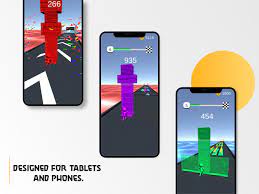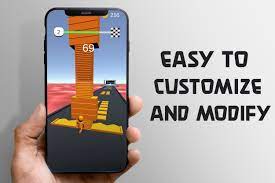How to Build and Run Unity Games
Unity is a robust and flexible game improvement motor that has enabled engineers to make vivid and detailed gaming encounters across different stages. Whether you are a carefully prepared designer or a newbie to the universe of game turn-of-events,

Beginning with How to Build and Run Unity Games
Introducing How to Build and Run Unity Games
Before you begin constructing your game, you want to install Unity on your machine. Go to the official Unity site, make a record, and download the Unity Center, which fills in as a focal point for dealing with your Unity tasks and establishments.
Unity Connection Point Outline
Learn more about the Unity interface, including the scene view, game view, order, task, and auditor sheets. Understanding the design and usefulness of these parts is pivotal for a productive game of events.
Making Your Most Memorable Unity Venture
Setting Up Another Undertaking
Use Unity Center to make another venture. Select the suitable settings, for example, project name, area, and layout (3D, 2D, or a particular stage layout). Unity gives various formats to launch your undertaking, given your game type.
The Unity Scene
Get familiar with the nuts and bolts of the Unity Scene, where you plan and orchestrate the components of your game. This includes adding game objects, making landscapes, and lighting your scenes.
Game Plan and Advancement
Unity GameObjects
Comprehend the idea of GameObjects and the structure blocks of Unity scenes. Figure out how to make, control, and sort out game objects to rejuvenate your game world.
Prearranging in Unity
Acquaint yourself with C#, the essential programming language utilized in Unity. Investigate the rudiments of prearranging, including making and appending contents to GameObjects, taking care of information, and carrying out fundamental game mechanics.
Material Science and Colliders
Investigate Unity’s material science motor to recreate practical collaborations between GameObjects. Figure out how to add colliders to GameObjects, execute gravity, and handle impacts.
Movement in Unity
Find the activity framework in Unity to rejuvenate your characters and articles. Figure out how to create liveliness, control movement states, and incorporate them into your game.
Upgrading Your Unity Game
Unity Resource Store
Investigate the Unity Resource Store, a vast commercial center that provides many resources, instruments, and modules to improve your game improvement process. Learn how to consistently coordinate resources into your project.
Lighting and Concealment
Ace Unity’s lighting and concealing frameworks establish dazzling and vivid game conditions. Find out about constant worldwide enlightenment, reflections, and post-handling impacts.
Sound and Music
Understand how to integrate audio effects and music into your game. Investigate Unity’s sound elements to make a vivid, hear-able experience for players.
Testing and Investigating
Playtesting Your Game
Gain proficiency with the significance of playtesting and how to repeat your game in light of player criticism. Use Unity’s play mode to test your game inside the manager.
Unity Profiler
Investigate Unity’s Profiler instrument to examine the presentation of your game. Distinguish and improve regions that affect the casing rate and, by and large, interactivity experience.
Building and Conveying Your Unity Game
Structure for Various Stages
Grasp is the most common way of building your game for different stages, including PC, Macintosh, iOS, and Android, and that’s only the tip of the iceberg. Arrange player settings and stage explicit contemplations.
Unity Cloud Fabricate
Investigate Unity Cloud Fabricate, a tool that mechanizes form interaction. Figure out how to set up and utilize Unity Cloud Work to smooth out the organization of your game.

Final Words about How to Build and Run Unity Games
Overall, How to Build and Run Unity Games is a compensating venture that includes dominating different parts of the game’s turn of events. From the underlying arrangement and plan to testing and sending, Unity gives a solid stage for designers to rejuvenate their inventive dreams. By following this complete guide, you’ll acquire the abilities and information expected to make and share your own Unity games with the world. Thus, focus on and jump into Unity, and let the game improvement experience start!
Faqs about How to Build and Run Unity Games
What is Unity, and why is it famous for game-turn events?
Unity is a robust cross-stage game improvement motor that permits designers to make 2D, 3D, increased reality (AR), and computer-generated reality (VR) encounters. Its ubiquity originates from its easy-to-understand interface, broad list of capabilities, and capacity to convey games on various stages, including PC, portable, and control center.
Do I really want programming experience to utilize Unity?
While earlier programming experience is valuable, Unity is intended to be available to amateurs. The essential prearranging language utilized in Unity is C#, and there are a lot of assets and instructional exercises accessible for learning the rudiments. Unity likewise offers a visual prearranging framework called Bolt, which permits clients to make game rationales without composing code.
How might I upgrade the exhibition of my Unity game?
Upgrading execution is pivotal for a smooth gaming experience. Unity gives you a profiler device to distinguish bottlenecks in your game. Procedures for streamlining incorporate effective resource utilization by the executives, legitimate utilization of shaders, carrying out Degree of Detail (LOD) strategies, and using Unity’s clumping and winnowing highlights.
What is the Unity Resource Store, and how might it help my game turn of events?
The Unity Resource Store is a web-based commercial center where engineers can track numerous resources, instruments, and modules to upgrade their ventures. It offers instant 3D models, surfaces, sound resources, and complete frameworks that can accelerate advancement and work on the nature of your game.
Could I at any point convey my Unity game on numerous stages, and how does the cycle work?
Indeed, Unity upholds sending on different stages like PC, Macintosh, iOS, and Android, and that’s just the beginning. The cycle includes arranging the task settings for the objective stage, settling any stage-specific issues, and fabricating the game. Unity gives a direct connection point to dealing with these settings, and there are stage-specific contemplations to remember, like screen goals and information strategies.
